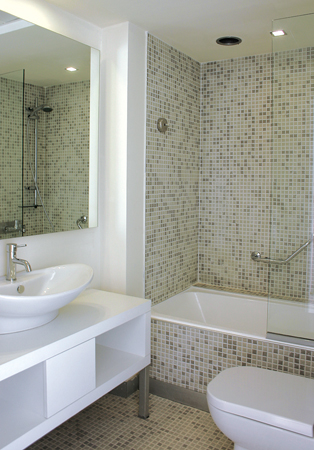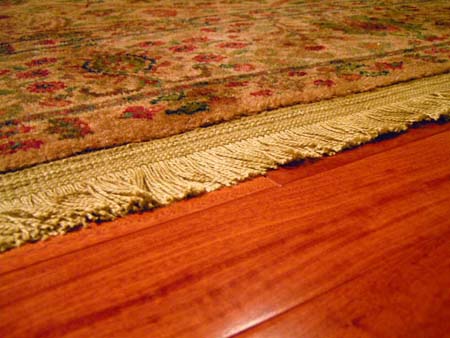By: Natasha Padgitt
Published: December 31, 2012
Which tax benefits do home owners miss? Will you get audited if you take the home office deduction? Find out the answers to these questions and more before Tax Day.
There are a lot of home ownership tax benefits — if you don’t forget to take them. To make sure you get your due, HouseLogic asked tax expert Abe Schneier, a senior technical manager with the American Institute of CPAs, for tax-filing tips.
HouseLogic: What’s the most common home-related tax deduction or credit claimed by home owners?
“Visit HouseLogic.com for more articles like this. Reprinted from HouseLogic.com with permission of the NATIONAL ASSOCIATION OF REALTORS®.”
Abe Schneier: The mortgage interest deduction, [which the NATIONAL ASSOCIATION OF REALTORS® estimates amounts to about $3,000 in tax savings for the average itemizing home owner] and [the deduction for] real property taxes.
HL: Which tax provision do home owners often overlook?
AS: You can deduct mortgage insurance premiums [or PMI] if you were required to get PMI as a condition of receiving financing on your home. Some people will overlook that, although it’s typically disclosed on the 1099 that you receive from the bank, along with all the deductible information you need.
HL note: The PMI deduction has been extended through 2013 and is retroactive for 2012.
[Another area of tax-filing confusion is] whether you’ve correctly treated any points you paid if you refinanced. In a new home purchase, the points can be deducted [in the tax year you paid them]. But typically in a refinancing, you have to amortize and deduct any points you paid over the life of the mortgage, and people tend to forget that after a couple of years.
HL: What’s the No. 1 mistake home owners make when filing their taxes?
AS: Because you receive a statement from the bank with details [such as] how much mortgage interest you paid over the year, and how much the bank pays on your behalf in real estate taxes, the number of mistakes has dropped.
But if you’re in a state where you pay the real estate taxes on your own — the bank doesn’t handle it for you — [people] make mistakes because sometimes real estate tax bills include other items besides pure real estate taxes. It could be trash collection fees; it could be snow removal fees that the state or county is assessing on the real estate tax bill. Since the items are included in the same bill, home owners sometimes deduct [those fees] regardless of whether the items are actually taxes.
HL: What’s the single most important piece of advice for people filing their taxes as a first-time home owner?
AS: You have to take a look at your closing statement from when you bought the house. It’s commonly called the HUD-1 form and you receive it at the closing. Occasionally, there are fees such as prepaid taxes or interest at closing that can be deductible.
HL: What tax advice do you have for someone who’s owned their home for 10 or 20 years?
AS: If you’ve been a longtime home owner and you’ve been through refinancings, you have to be careful about how much interest you’ve deducted, especially if you have a home equity loan or equity line. A lot of people who’ve refinanced have sizable equity lines. The maximum outstanding home equity debt on which interest is deductible is $100,000; the maximum loan amount on which interest is deductible is $1 million.
HL: What home improvement-related records should home owners keep?
AS: Absolutely keep your receipts for couple of reasons:
1. You want to make sure — if there are any warranties attached to the work that was done — that you maintain those records and you have something to go back to the person who did the work in case something doesn’t function properly.
2. If you’ve added value to the home — you’ve added a deck, you’ve added a room, you’ve added something new to house — you’ll need to know what the gain is on that capital improvement when you sell the house.
HL note: Tax rules let you add capital improvement expenses to the cost basis of your home, and a higher cost basis lowers the total profit or capital gain you’re required to pay taxes on. Of course, most home owners are exempted from taxes on the first $500,000 in profit for joint filers ($250,000 for single filers). So it doesn’t apply to too many people.
HL: How do I tell the difference between a capital improvement and a repair?
AS: Typically a repair is [done] to allow an item, like a home furnace or air conditioner, to continue. But if you were to replace the heating unit, that’s not a repair.
HL: Does taking any home-related tax benefits, such as the home office deduction, make a taxpayer more likely to be audited?
AS: Only if numbers look out of the ordinary — for instance, if one year you were writing off $20,000 in mortgage interest debt and the next year you’re writing off $100,000 in mortgage interest. Taking the home office deduction in and of itself doesn’t usually generate an audit. However, if you claim nominal income and significantly higher expenses in an effort to create artificial losses, the IRS will see that there’s something else going on there.
HL: Once filing season is over, when should home owners start thinking about next year’s taxes?
AS: Well, hopefully, when you visit your CPA to give information about or pick up [this year’s] tax return, your CPA has spoken with you about your plans for [next year]:
- If any major improvements are scheduled
- If you’re planning on moving
- How to organize any expenditures for fixing up the home before sale
If you’re planning to do any of those things, talk with your CPA so that you’re prepared with documentation and so that the [tax pro] can help minimize your tax situation.
“Visit HouseLogic.com for more articles like this. Reprinted from HouseLogic.com with permission of the NATIONAL ASSOCIATION OF REALTORS®.”














